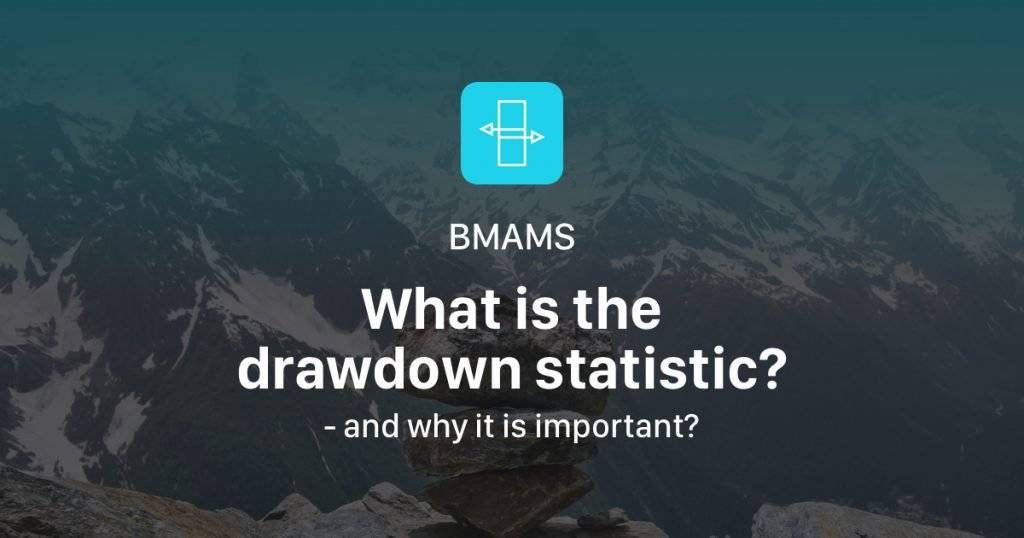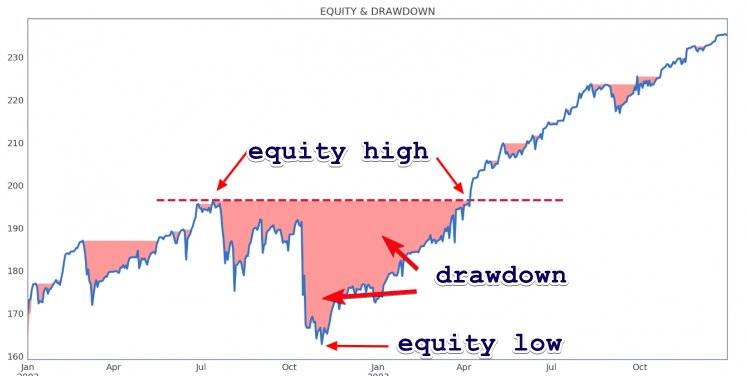
The drawdown statistic is one of the most important values to consider when judging a system and comparing it with others.
The best way to understand what a drawdown is – is to graphically represent it:
Each of the red sections in this graph are drawdowns. The biggest drawdown is called the maximum drawdown and this is the section that has been labelled on this graphic.
The drawdown is the period between equity highs. In this example the drawdown lasted from approximately July one year until April the next year.
During a period of drawdown the maximum drawdown is the difference (or equity lost) between the point of the equity high, and the equity low.
This maximum drawdown statistic is the key. It is often expressed as a percentage of equity lost during the drawdown.
Drawdown is the most simple and easy-to-understand measure of a risk of a system- the size or depth of its drawdown (how much money it can lose), and also the period length of its drawdown (how long it can go without making money).
Next week we will look at how this drawdown statistic can be combined with the return statistic to help evaluate the returns relative to risk of different systems.
Originally posted on https://www.bmams.com.au/
The post BMAMS: What is the drawdown statistic? and why it is important first appeared on trademakers.
The post BMAMS: What is the drawdown statistic? and why it is important first appeared on JP Fund Services.
The post BMAMS: What is the drawdown statistic? and why it is important appeared first on JP Fund Services.









